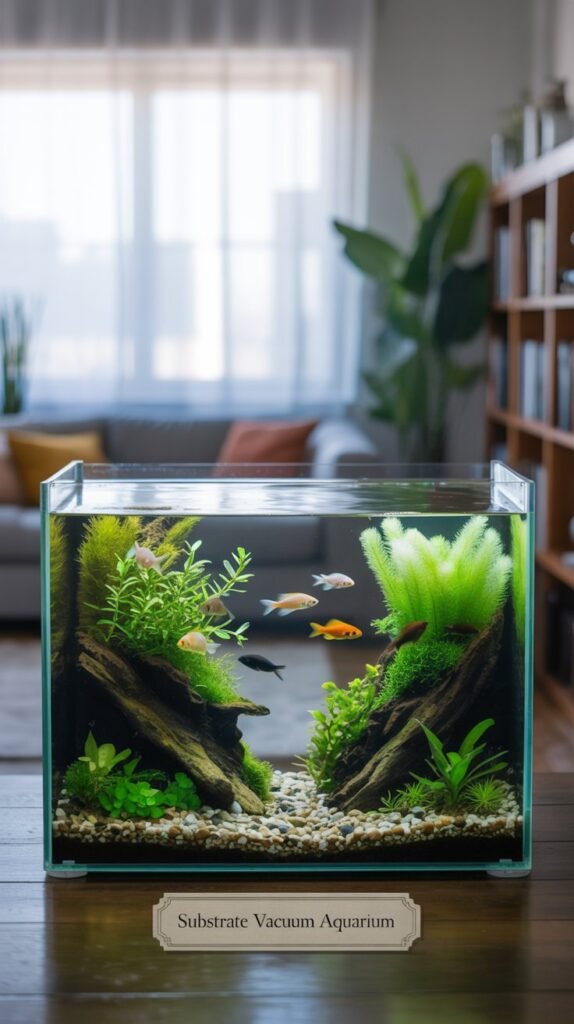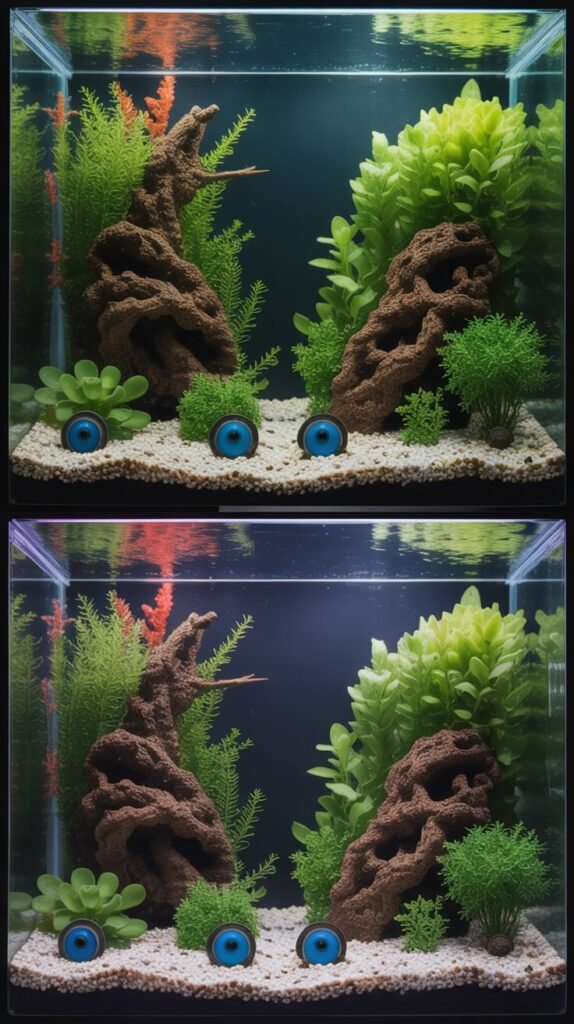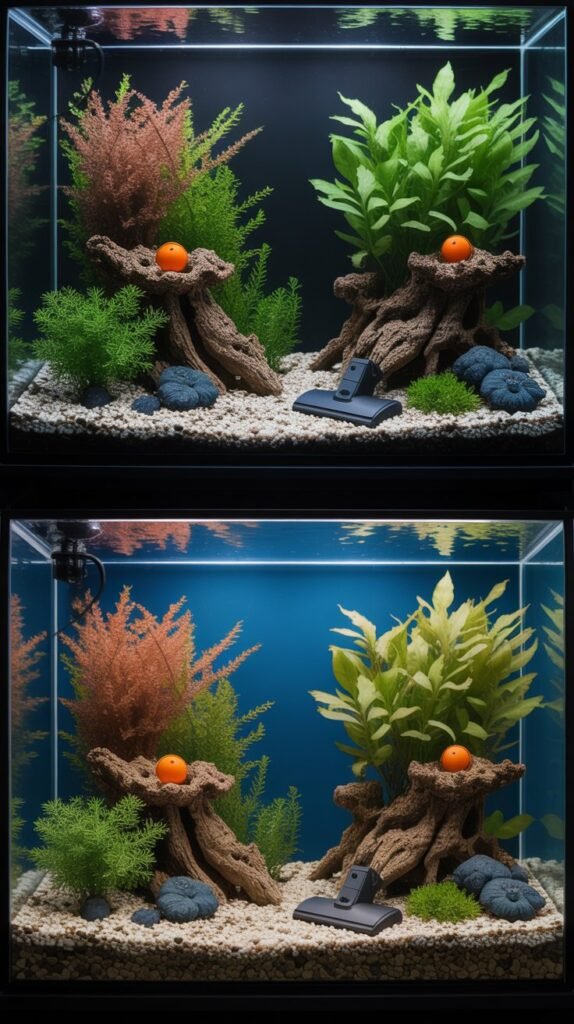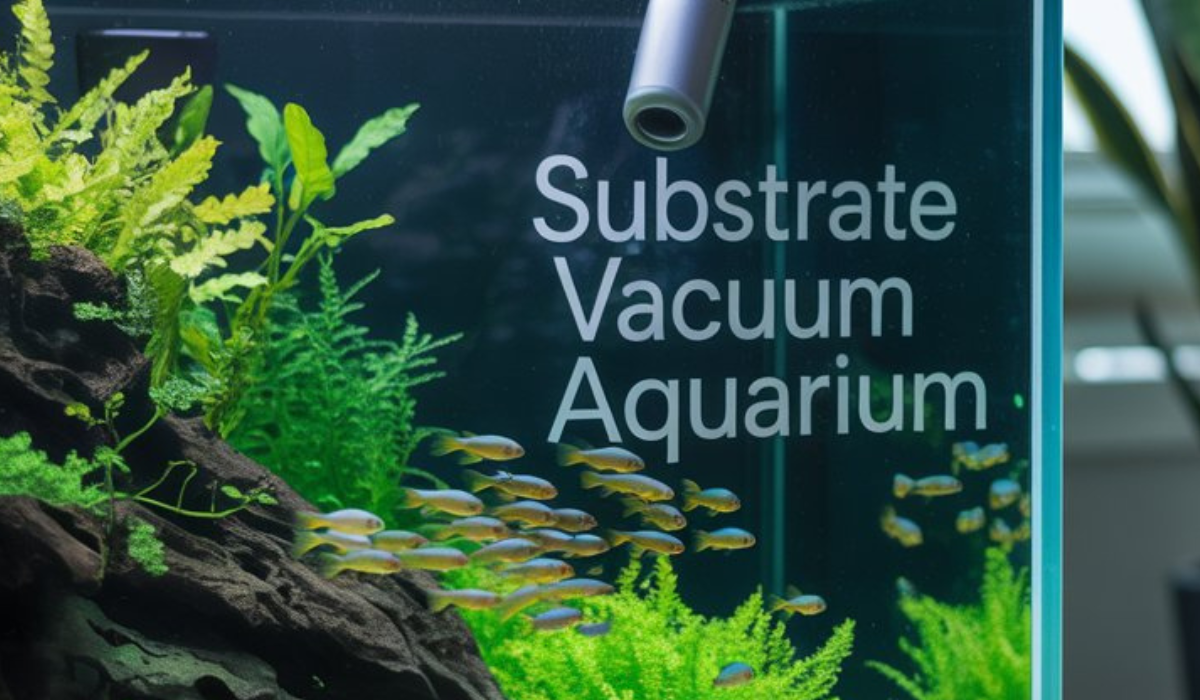Maintaining a healthy aquarium isn’t just about feeding fish and enjoying their beauty. Behind every thriving tank lies consistent care, especially when it comes to substrate cleaning. Over time, uneaten food, fish waste, and decaying plant matter build up in the gravel or sand, creating an unhealthy environment. This is where a substrate vacuum for aquariums becomes an essential tool.
In this detailed guide, we’ll explore everything about substrate vacuums in aquariums—what they are, how they work, why they’re necessary, the best techniques for different types of tanks, and common mistakes to avoid. By the end, you’ll understand how to keep your aquarium substrate clean, ensuring your fish and plants thrive.
What Is a Substrate Vacuum Aquarium Tool?
A substrate vacuum, also known as a gravel vacuum or aquarium siphon cleaner, is a device used to remove debris, fish waste, and detritus from the substrate in an aquarium. It works by creating suction (usually through a siphon or pump), allowing dirty water and debris to be siphoned out while leaving the heavier substrate (gravel, sand, or soil) behind.

There are different types of vacuums:
- Manual Siphon Vacuums – Operated by gravity; simple and affordable.
- Battery-Powered Vacuums – Provide suction without siphoning water.
- Electric Aquarium Vacuums – More advanced, with filtration and debris collection systems.
The main goal of a substrate vacuum is to maintain a clean substrate, which directly impacts fish health, plant growth, and overall water quality.
Why Is Substrate Vacuuming Important?
Aquarium substrates—whether gravel, sand, or soil—act as a trap for waste materials. If left unchecked, this buildup can lead to serious issues:
1. Prevents Ammonia Spikes
Fish waste and decaying matter release ammonia, which is toxic to fish. A dirty substrate becomes a hidden source of dangerous ammonia, nitrite, and nitrate buildup.
2. Improves Water Quality
Regular vacuuming helps maintain clear, odor-free water by removing organic waste that clouds the tank.
3. Prevents Algae Growth
Nutrient-rich debris in the substrate fuels unwanted algae blooms. Cleaning reduces excess nutrients, keeping algae under control.
4. Supports Fish Health
A dirty substrate harbors harmful bacteria and parasites. Vacuuming helps prevent infections, fin rot, and diseases caused by poor water conditions.
5. Keeps Aquarium Aesthetics Clean
A clean substrate looks attractive, enhancing the beauty of your aquascape or fish display.
6. Promotes Plant Growth
In planted tanks, removing surface debris prevents suffocation of plant roots while still keeping nutrient-rich layers intact.
Types of Substrates and Vacuuming Methods

Different substrate types require different cleaning approaches. Using the wrong technique can disturb beneficial bacteria or damage plants.
1. Gravel Substrate
- Best Tool: Gravel siphon vacuum.
- Method: Insert the vacuum tube into the gravel, lift it gently, and let the suction pull debris while gravel falls back.
- Frequency: Once every 1–2 weeks during water changes.
2. Sand Substrate
- Best Tool: Wide-mouth siphon or specialized sand vacuum.
- Method: Hover the siphon just above the sand surface to pull debris without removing sand. Avoid deep digging, as sand compacts easily.
- Frequency: Light cleaning weekly.
3. Soil or Planted Substrate
- Best Tool: Gentle siphon or spot-cleaning vacuum.
- Method: Clean only exposed areas to avoid disturbing plant roots. In nutrient-rich soil, avoid deep vacuuming.
- Frequency: Spot clean during water changes.
4. Bare-Bottom Tanks
- Best Tool: Standard siphon or sponge filter intake.
- Method: Easy cleanup as waste settles on the tank bottom. Simply siphon or wipe away debris.
- Frequency: Weekly cleaning.
How to Use a Substrate Vacuum Aquarium Tool
Here’s a step-by-step guide for beginners:
- Prepare Your Tools
- Substrate vacuum (manual or electric)
- Bucket (for manual siphons)
- Water conditioner (if replacing water)
- Start the Siphon
- Place the vacuum tube into the substrate.
- Suck air or shake the siphon to start water flow into a bucket.
- Vacuum the Substrate
- Push the vacuum tube into the gravel or hover above sand.
- Allow debris to be lifted away while substrate settles back.
- Move Across the Tank
- Work section by section. Don’t clean the entire substrate at once (to preserve beneficial bacteria).
- Replace Water
- Since vacuuming removes water, perform a partial water change (20–30%).
- Add dechlorinated, temperature-matched water back to the tank.
- Repeat Regularly
- Vacuum every 1–2 weeks depending on tank size, stocking, and feeding levels.
How Often Should You Vacuum the Substrate?

The frequency depends on several factors:
- Heavily Stocked Tanks (Goldfish, Cichlids): Every week.
- Lightly Stocked Tanks (Tetras, Guppies): Every 2 weeks.
- Planted Aquariums: Once a month or spot clean.
- Fry or Shrimp Tanks: Rarely, to avoid disturbing delicate life.
Best Aquarium Substrate Vacuums
1. Python No Spill Clean and Fill
- Attaches directly to tap for easy water changes.
- Ideal for large tanks.
2. Aqueon Aquarium Vacuum
- Affordable manual gravel vacuum.
- Great for beginners.
3. NICREW Automatic Gravel Cleaner
- Battery-powered, safe for spot cleaning.
- Works without removing water.
4. EHEIM Quick Vac Pro
- Electric vacuum with built-in filter.
- Suitable for deep cleaning without water changes.
5. Fluval AquaVac+
- Advanced cordless vacuum with multiple attachments.
- Perfect for larger aquariums.
Common Mistakes When Using a Substrate Vacuum
- Over-Cleaning the Substrate
Removing too much can destroy beneficial bacteria colonies. Always clean gradually. - Vacuuming During Medication Treatment
Some medications rely on settled particles; avoid deep vacuuming during treatments. - Neglecting Water Changes
Vacuuming alone isn’t enough—always pair it with water changes. - Sucking Up Substrate
Beginners often pull up too much gravel or sand. Adjust technique to allow substrate to fall back. - Ignoring Hidden Areas
Waste accumulates behind decorations and plants—make sure to vacuum around them.
Substrate Vacuuming in Special Aquariums
1. Planted Tanks
- Avoid uprooting plants.
- Focus on surface cleaning only.
2. Shrimp Tanks
- Be gentle to avoid sucking up shrimp.
- Use a sponge on the vacuum tip for protection.
3. Breeding Tanks
- Avoid disturbing eggs or fry.
- Use spot-cleaning or turkey basters for gentle debris removal.
4. Saltwater Aquariums
- Vacuuming is optional depending on setup.
- In reef tanks, sand-sifting snails and gobies often clean substrate naturally.
Benefits of Substrate Vacuuming for Aquarists
- Healthier Fish – Reduced risk of disease.
- Cleaner Water – Improved clarity and oxygen levels.
- Balanced Ecosystem – Prevents harmful spikes in waste levels.
- Longer Tank Life – Reduces algae, odors, and sludge buildup.
- Easier Maintenance – Prevents deep cleaning crises later.
Conclusion
A substrate vacuum aquarium tool is not just an accessory—it’s a necessity for anyone serious about maintaining a clean, healthy, and beautiful fish tank. Whether you have gravel, sand, soil, or a bare-bottom setup, regular vacuuming helps remove hidden waste, improves water quality, and keeps your fish thriving.
By choosing the right type of vacuum, learning proper techniques, and avoiding common mistakes, you can ensure your aquarium remains a safe and stunning environment for your aquatic pets.
FAQs About Substrate Vacuum Aquarium
Q1. Do I need to vacuum my aquarium substrate if I have a filter?
Yes. Filters remove floating particles, but waste settles into the substrate. A vacuum removes debris that filters can’t reach.
Q2. How often should I vacuum my gravel or sand?
Once every 1–2 weeks for most tanks. Heavily stocked tanks may need weekly cleaning, while lightly stocked or planted tanks can go longer.
Q3. Can I vacuum my substrate without removing water?
Yes. Battery and electric substrate vacuums allow cleaning without water removal. However, water changes are still necessary for tank health.
Q4. Will vacuuming disturb beneficial bacteria in my tank?
Not if done correctly. Only clean small sections at a time to preserve bacteria colonies.
Q5. Is substrate vacuuming safe for planted tanks?
Yes, but avoid deep digging. Spot clean around plants to prevent root disturbance.
Q6. Do I need to vacuum if I have bottom feeders like loaches or snails?
Bottom feeders help but don’t replace vacuuming. They eat leftovers but cannot remove fish waste effectively.
Q7. Can I make a DIY substrate vacuum?
Yes. A simple siphon can be made with a plastic tube and hose. However, commercial vacuums are easier and safer for beginners.
Q8. What happens if I never vacuum my substrate?
Waste buildup leads to poor water quality, harmful ammonia spikes, algae blooms, and increased fish disease risk.

